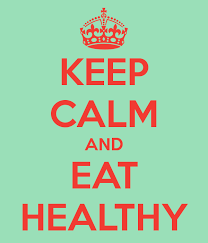“Are you full yet?”
“Finish your plate!”
Does this sound familiar to you? As children these phrases are just the beginning of listening to external sources to help us decide when, what and how much to eat. Fast forward to adulthood and now we eat because of advertising, the clock, our peers, our emotions or even our dietitians! But our body has a very clever system in place to help us to eat the right amount of food for health and happiness; many of us have just stopped listening to it.
How does it work?
Over simplified, sensors in your mouth, nose, stomach and intestinal track activate in the presence of food and send a message to your brain about how much and what type of food has been eaten. Your brain then stops looking for food. The reverse also happens in the absence of food in the gastro-intestinal tract. The real situation is more complex and involves many other environmental and internal factors.
Young children are a perfect example of this system working. Babies and toddlers who are offered regular nutritious food are experts at eating the exact amount for their optimal development. This is because they haven’t (yet) been exposed to years of external messages regarding food choices. Some messages are well intended, such as our parents concern we are getting enough nutrition.  Some are less so, such as marketing for junk food.
Some are less so, such as marketing for junk food.
So what can we do about it?
Despite many factors being out of our control, one activity that helps get us back in touch with these body signals in a huger-fullness scale. Scan your body before and after meals and try to bring awareness to internal cues. Does my stomach feel empty, full or bloated? Is it moving or growling? Am I light headed, nauseas or irritated? Is my mouth dry? Am I thirsty? Then rate yourself on a scale of 1-10, 1 being starving, 5 being neutral and 10 being completely stuffed full. If we can stay at all times between 3-5 we can better regulate our energy intake and metabolism. Keep in mind it can take about 20 minutes for your brain to realise your stomach is full so if we stop eating at a 5 we will be comfortably full shortly after.
So what do you do if you have decided you are not actually hungry but still craving food? Use your new awareness skill and consider why. Are you bored? Excited? Sad? Lonely? Have you seen something yummy on TV or in the cupboard? Try to tailor your cravings plan to the real need you are feeling instead of using food.
If you would like more information on non-hungry eating, the hunger scale, cravings plans or anything nutrition related contact Eat Smart Nutrition! Amelia Webster is available at both Runaway Bay & Burleigh Clinics, ph 07 5500 6470 for a consult


